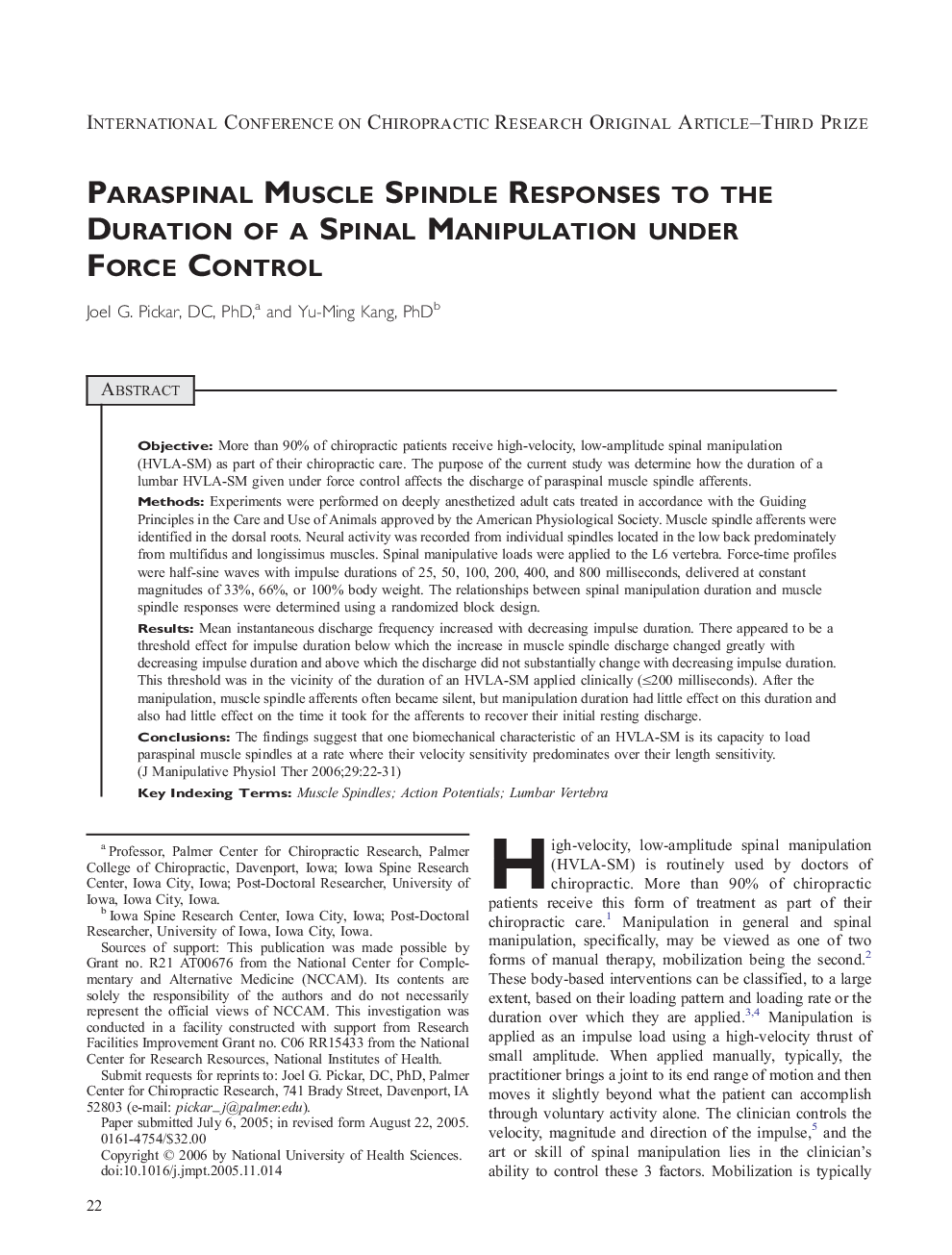| Article ID | Journal | Published Year | Pages | File Type |
|---|---|---|---|---|
| 2621687 | Journal of Manipulative and Physiological Therapeutics | 2006 | 10 Pages |
ObjectiveMore than 90% of chiropractic patients receive high-velocity, low-amplitude spinal manipulation (HVLA-SM) as part of their chiropractic care. The purpose of the current study was determine how the duration of a lumbar HVLA-SM given under force control affects the discharge of paraspinal muscle spindle afferents.MethodsExperiments were performed on deeply anesthetized adult cats treated in accordance with the Guiding Principles in the Care and Use of Animals approved by the American Physiological Society. Muscle spindle afferents were identified in the dorsal roots. Neural activity was recorded from individual spindles located in the low back predominately from multifidus and longissimus muscles. Spinal manipulative loads were applied to the L6 vertebra. Force-time profiles were half-sine waves with impulse durations of 25, 50, 100, 200, 400, and 800 milliseconds, delivered at constant magnitudes of 33%, 66%, or 100% body weight. The relationships between spinal manipulation duration and muscle spindle responses were determined using a randomized block design.ResultsMean instantaneous discharge frequency increased with decreasing impulse duration. There appeared to be a threshold effect for impulse duration below which the increase in muscle spindle discharge changed greatly with decreasing impulse duration and above which the discharge did not substantially change with decreasing impulse duration. This threshold was in the vicinity of the duration of an HVLA-SM applied clinically (≤200 milliseconds). After the manipulation, muscle spindle afferents often became silent, but manipulation duration had little effect on this duration and also had little effect on the time it took for the afferents to recover their initial resting discharge.ConclusionsThe findings suggest that one biomechanical characteristic of an HVLA-SM is its capacity to load paraspinal muscle spindles at a rate where their velocity sensitivity predominates over their length sensitivity.
